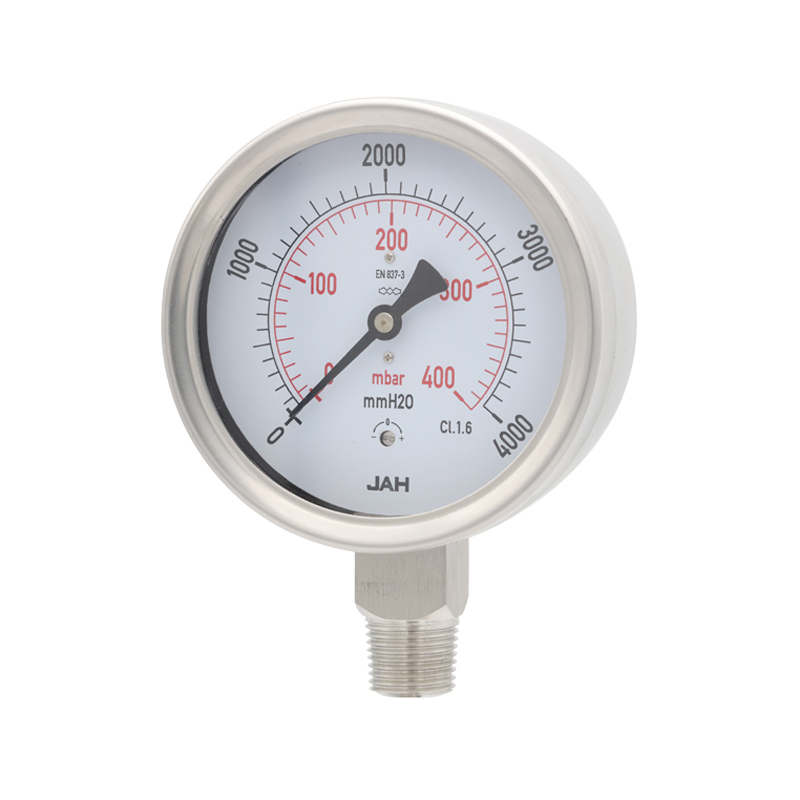
Oct . 18, 2024 10:11 Back to list
Hydraulic Differential Pressure Gauge for Accurate Fluid Measurement and Monitoring Systems
Understanding Hydraulic Differential Pressure Gauges
Hydraulic differential pressure gauges are essential instruments used in various industrial applications to measure and monitor the pressure difference between two points in a hydraulic system. These gauges play a critical role in ensuring the safety, efficiency, and reliability of hydraulic systems. This article delves into the functioning, applications, and significance of hydraulic differential pressure gauges in modern industry.
What is a Hydraulic Differential Pressure Gauge?
A hydraulic differential pressure gauge is a specialized device designed to measure the pressure difference between two fluid points. It typically consists of two pressure sensing inputs connected to a single display, allowing operators to monitor the pressure across a component or system. These gauges operate based on the principle of pressure differentials, where the difference in pressure between the two inputs is translated into a readable output, often displayed in units such as psi, bar, or pascals.
Working Principle
The functioning of a hydraulic differential pressure gauge involves various components, including a diaphragm, Bourdon tube, or piezoelectric sensor. The pressure from the two points enters the gauge through dedicated ports. The gauge automatically calculates the difference between the two pressures and presents it on an analog or digital display.
1. Diaphragm Type In diaphragm-type gauges, the pressure causes a flexible diaphragm to deform. The displacement of the diaphragm is then calibrated to display the corresponding pressure difference.
2. Bourdon Tube Type The Bourdon tube, a curved tube that straightens when pressure is applied, can also be used for differential measurements. The movement is linked to a pointer, which moves over a calibrated dial.
3. Electronic Sensors In modern applications, electronic pressure sensors provide a digital readout of pressure differentials. These sensors can be connected to data acquisition systems for remote monitoring and analysis.
Applications
Hydraulic differential pressure gauges have widespread applications across various industries, including
- Hydraulic Systems In hydraulic machinery, these gauges monitor pressure differences to ensure optimal operation, preventing issues like cavitation and overheating
.hydraulic differential pressure gauge jah

- Water Treatment Plants Differential pressure gauges help monitor filter conditions, indicating when filters need replacement or maintenance.
- Oil & Gas In the oil and gas industry, these gauges are crucial for monitoring pressure differentials across pipelines and equipment, ensuring safety and operational efficiency.
- HVAC Systems In heating, ventilation, and air conditioning systems, differential pressure gauges ensure proper airflow and system performance by monitoring pressure drops across filters and coils.
- Pharmaceuticals and Food Processing These industries require strict monitoring of pressure differentials to maintain product quality and safety. Differential pressure gauges help ensure sterile environments and proper flow in processing systems.
Importance of Monitoring Differential Pressure
Monitoring differential pressure is vital for several reasons
1. Safety Differential pressure gauges help identify potential blockages or failures in systems, allowing for prompt maintenance and reducing the risk of accidents or system failures.
2. Efficiency Regular monitoring can prevent unnecessary downtime and optimize system performance, leading to cost savings and increased productivity.
3. System Longevity By keeping track of pressure differentials, operators can identify early signs of wear or damage in components, leading to proactive maintenance and extended system life.
4. Regulatory Compliance Many industries are subject to strict regulations concerning pressure monitoring. Using hydraulic differential pressure gauges helps ensure compliance with safety and operational standards.
Conclusion
Hydraulic differential pressure gauges are indispensable tools in modern industrial applications, providing essential data for maintaining system integrity, optimizing performance, and ensuring safety. As industries continue to evolve, the integration of advanced technologies in pressure measurement will enhance the capabilities of these gauges, making them even more crucial in improving operational efficiency and safety standards. Understanding and utilizing hydraulic differential pressure gauges effectively can lead to better management of hydraulic systems and contribute significantly to overall operational success.
-
High-Precision 5 Valve Manifold Differential Pressure Gauge Suppliers
NewsApr.29,2025
-
High-Precision Diaphragm Vacuum Pressure Gauges Manufacturers & Quotes
NewsApr.29,2025
-
Omega Differential Pressure Gauges High Accuracy & Durability
NewsApr.28,2025
-
Low Pressure Differential Pressure Gauges Precision Solutions & Quotes
NewsApr.28,2025
-
Digital Diaphragm Pressure Gaauge Precision Measurement & OEM Quotes
NewsApr.28,2025
-
Differential Pressure Gauge China Price High-Accuracy & Best Quotes
NewsApr.28,2025
